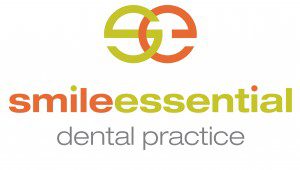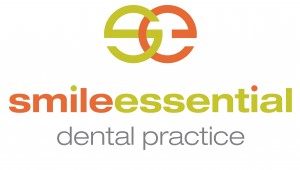
As we age so do our teeth. It makes sense as you know your Granny and Gramps’ teeth look quite different from yours (real teeth or not!). However, it isn’t something we necessarily think about or ponder the question ‘hmmm how can I keep my teeth looking youthful?’.
Let’s discuss the 5 ways that your pearlies are showing your age and advice from our Leicester dentists on how you can keep them looking youthful.
1) Ageing – Worn Down Teeth
As we age teeth can become more worn due to general wear and tear. However, for some, they may be grinding their teeth excessively. This generally occurs when they are sleeping and as a result, many people are unaware they do it. Bruxism is the medical term for this type of teeth grinding. Whilst Bruxism can affect you at any age it is most common in 25 – 44 year olds. Stress, drinking alcohol and caffeine can worsen the symptoms.
There are a few things you can do to check if you suffer from this. First, ask your partner if they have noticed you grinding your teeth (most people discover this way!) also, take a look at your teeth in the mirror are the edges of the teeth flat? Take a close look at your canine tooth as this is should be generally more pointy but gets worn down over time from tooth wear and grinding. You can also ask your dentist at your next appointment. In our Leicester dental practice, this is something we always monitor and discuss with our patients.
You can reduce the chances of your teeth becoming overly worn by keeping lifestyle factors such as stress, smoking, drinking and caffeine to a minimum. Discuss potentially wearing a guard to protect your teeth at night with your dental practitioner.
2) Teeth Get Darker As You Age
This happens for a few reasons, we. Firstly the stains from what we eat and drink build up on the teeth, they become more ingrained as we get older (think of your favourite tea mug). There’s also of course smoking and drinking red wine which is notorious for causing heavy staining and discolouration.
Secondly, it’s caused by the thinning of the outer tooth surface – the enamel which is generally whiter which shows the underlying dentine which is a more yellow shade. Also with ageing, the tooth lays down more dentine, which reduces the translucency of the tooth, making it appear darker.
There are several things you can do to help this. You can be careful with the food you eat and drink and you most definitely should stop smoking. You can reduce staining by drinking or rinsing with water afterwards, using a reputable fluoride toothpaste which helps with daily stain removal (Colgate Total Whitening) and using an electric toothbrush – we love the Philips Sonicare electric toothbrush.
You should be mindful about enamel erosion and wait at least an hour after eating or drinking before brushing or you could be brushing away the whiter tooth enamel. Finally, be careful about consuming acidic foods and drinks e.g. sipping lemon water.
Consider professional teeth whitening. Home tooth whitening can be fantastic for lightening the teeth. You usually carry out the treatment each evening for around 14 nights. You can see the improvement daily so you can always stop the treatment if you’re teeth become as light as you would like. It’s important to note that teeth whitening only works on teeth and will not lighten dental fillings, crowns or veneers.
Young Adult Teeth

Older Adult Teeth

Take a close look at the images above can you see the different ways that the smile has aged?
3) Ageing and Receding Gums
Gum tissues do naturally recede with age but it is often our own handling of gums that does the most damage. Overzealous brushing (or scrubbing!) can damage the gums, particularly for the delicate area where the teeth and gums meet – the gum margin.
Also receding gum lines are often caused by gum disease. This condition begins with dental plaque, a sticky substance that contains bacteria, mucous and food debris – is left on your teeth. Often missed by brushing along the gum margins and in between the teeth – an area where your toothbrush can’t reach.
By visiting our Leicester oral health team regularly they can advise you on the correct and most effective routine for you and spot signs early to prevent them from becoming problems.
Other warning signs your brushing too hard is that your toothbrush is flayed or you are using an electric toothbrush but instead of letting the brush do the work you continue to use it as a manual toothbrush and are moving it around as opposed to letting it glide over your teeth.
4) Ageing and Missing Teeth
Tooth loss seems to accelerate in the older years. The most common cause for this is gum disease. But it can also be due to teeth becoming decayed or heavily filled over the years.
It’s important to get tailored advice from your dentist about replacing missing teeth. Even if you just lose one tooth it can be detrimental to your teeth. If there is a space where your tooth was it could lead to your other teeth moving (a popular phrase in dentistry is – teeth like to have neighbours!). There is likely something going on that may affect your other teeth, so get advice and stop things from progressing.
Every tooth in a man’s head is more valuable than a diamond. ~Miguel de Cervantes
5) Ageing and Discoloured or Old Fillings
Often dental patients mistakenly think that fillings last forever. Sadly this isn’t true. All fillings will have to be replaced at some point. Old fillings can really age the teeth that are visible when you smile. When fillings are old they can have leaky margins (where the filling connects to the tooth) this can attract staining and also harbour plaques and debris causing more extensive problems.
Getting your fillings checked regularly is very important. Our modern Leicestershire dentists are focused on prevention rather than restoration. Dental X-rays are a useful tool for your dental team to check and areas they can’t visibly see such as between the teeth and underneath your fillings.
Take a look at how our Leicester dental team can help to keep your mouth healthy and your gums in great condition…









